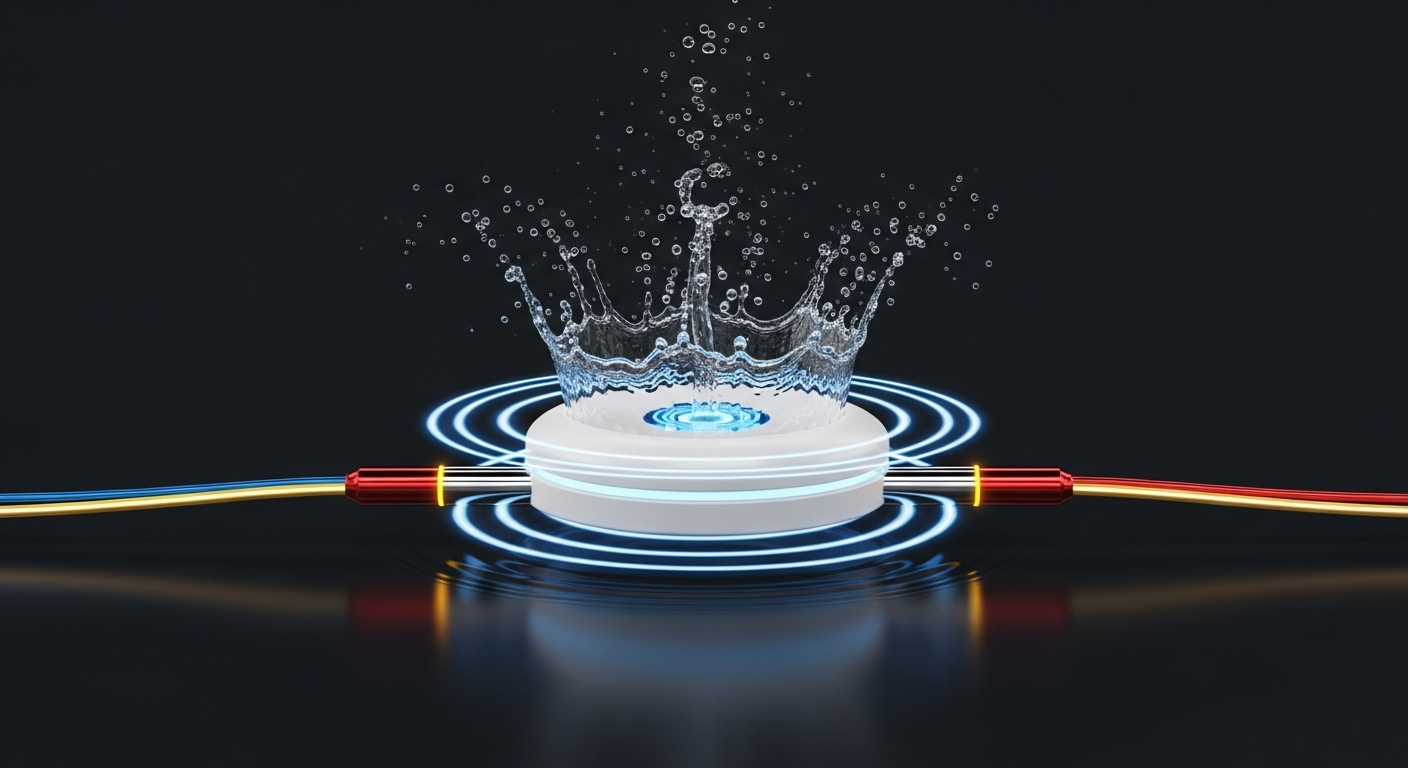The gentle, rolling mist that spills over the edge of a paludarium or cloaks the surface of a water feature adds a captivating layer of mystique to any aquatic setup. This atmospheric effect, once the domain of complex and bulky professional equipment, is now commonly achieved with a small, simple device: the ultrasonic mist maker. At the heart of this seemingly magical technology lies a fascinating and powerful scientific principle known as the piezoelectric effect.
This effect describes the unique ability of certain crystalline materials to generate an electric charge in response to applied mechanical stress, and conversely, to deform physically when an electric field is applied. It is this second property that ultrasonic mist makers harness to atomize water into a fine, cool fog. This elegant conversion of electrical energy into high-frequency mechanical vibration is a perfect example of physics being used to create a purely aesthetic, artistic effect.
Understanding how this technology works provides a deeper appreciation for the sophisticated tools available to the modern aquarist. It is a journey into the practical application of advanced physics. This same spirit of scientific inquiry is essential when one seeks to understand the very building blocks of scent, such as the discovery and impact of the synthetic “Calone” aquatic molecule, which single-handedly defined a generation of fragrances.
The Vibrating Ceramic Heart
The core component of any ultrasonic mist maker is a small, thin ceramic disc. This disc is not made from ordinary ceramic but from a specialized piezoelectric material, typically a type of lead zirconate titanate. This material is chosen for its exceptional ability to change shape rapidly and precisely when subjected to an alternating electrical current.
When the device is powered on, an electronic circuit sends a high-frequency alternating voltage across the ceramic disc. This rapidly fluctuating electric field forces the disc to physically expand and contract at an incredibly high speed—usually over a million times per second. This high-frequency oscillation is what gives the device its “ultrasonic” name, as the vibrations are far beyond the range of human hearing. The high-frequency disc vibration is the engine that drives the entire misting process.
This vibrating disc is placed just below the surface of the water. Its intense, rapid pulsations are transferred directly into the water, creating immense pressure waves at the point of contact. It is this intense, localized energy that is responsible for the next stage of the process: cavitation.
From Vibration to Cavitation
The ultrasonic vibrations produced by the ceramic disc are so powerful that they literally tear the water apart at a microscopic level. This process is known as cavitation. As the disc vibrates, it creates alternating cycles of high pressure (as it pushes up) and low pressure (as it pulls down) in the water immediately above it.
During the low-pressure cycle, tiny, vacuum-filled bubbles, or cavities, form in the water. During the subsequent high-pressure cycle, these bubbles violently collapse or implode. The implosion of these millions of microscopic bubbles generates intense, localized energy and shockwaves.
- Bubble Formation: The negative pressure wave from the disc’s vibration creates microscopic vacuum pockets in the water.
- Violent Collapse: The subsequent positive pressure wave causes these pockets to implode with tremendous force.
- Energy Release: This collapse releases enough energy to eject tiny particles of water from the surface.
- Mist Creation: A collective eruption of these ejected particles forms the fine, cool fog we see as mist.
It is this continuous, violent cycle of bubble formation and collapse that atomizes the liquid water into a gaseous vapor without the use of any heat.
Why the Mist is Cool
One of the most appealing features of an ultrasonic mist maker is that the fog it produces is cool to the touch. This is a direct result of the cavitation process and stands in stark contrast to older methods of creating fog, which relied on heating water to create steam. The absence of heat makes these devices perfectly safe for use in delicate planted aquariums and enclosures with live animals.
The process is entirely mechanical and physical. The energy from the ultrasonic vibrations is used to overcome the surface tension of the water and fling microscopic droplets into the air. This is a form of nebulization, not boiling.
Because no heat is added to the system, the resulting mist has the same temperature as the source water. In fact, due to the principles of evaporative cooling, the mist and the surrounding air may even feel slightly cooler. This makes ultrasonic misters an ideal tool for increasing humidity in tropical or high-humidity setups without undesirably raising the ambient temperature.
Practical Applications and Considerations
In the world of aquascaping and home aquariums, ultrasonic mist makers serve a dual purpose. Their primary function is aesthetic, creating a beautiful, naturalistic fog effect that adds a sense of depth and mystery to a display. They are particularly popular in paludariums (half-land, half-water tanks) and ripariums (riverbank-style setups), where the mist can blanket the “land” portion of the scape.
Beyond aesthetics, the mist also serves a practical function by significantly increasing the ambient humidity in and around the aquarium. This is highly beneficial for the emergent or terrestrial plants often used in these types of setups, such as mosses, ferns, and orchids, which thrive in high-humidity environments. The increased ambient humidity is critical for the health of these non-aquatic species.
However, there are considerations to keep in mind. Because the mist is created from the tank water, any minerals or impurities in the water will also be carried in the mist and can leave a white, dusty residue on surrounding surfaces over time. For this reason, it is highly recommended to use purified or reverse osmosis (RO) water with these devices to ensure a clean, residue-free operation.
Frequently Asked Questions
Yes, they are generally considered very safe. The ultrasonic frequencies used are not harmful to aquatic life, and since the process does not generate heat, there is no risk of burns. The only potential issue is the mineral residue left behind if using hard tap water, which is why purified water is recommended.
The piezoelectric ceramic disc is the primary consumable part of the device. Its lifespan depends on usage and water quality, but it typically lasts for several thousand hours of operation. Most modern mist makers come with a small key-like tool and replacement discs, which are very easy to change.
No, they are remarkably energy-efficient. A typical small, single-disc mist maker uses very little power, often comparable to a small LED light or an air pump. This makes them an economical way to add a high-impact visual and functional element to your aquarium setup.

